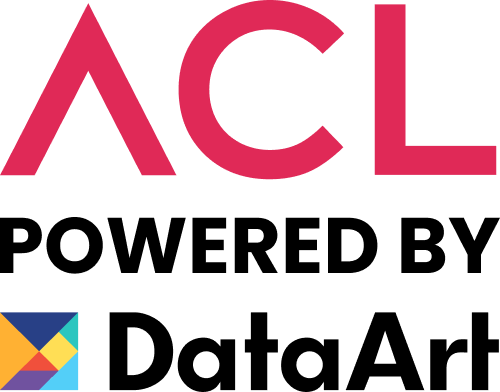Can you hire Mobile App Developers in Latin America?
In recent years, Latin America, a region renowned for its cultural richness and picturesque landscapes, has been making waves in the technology sector. As businesses globally search for fresh innovation hubs, Latin America emerges as a promising destination for mobile app development. This raises the question: Is it possible to find skilled mobile app developers in this region? The answer is a resounding yes. Let's dive deeper into this burgeoning tech landscape and the myriad opportunities it presents.
At ACL, we're not just another corporate entity; we're a family of dedicated individuals with a shared passion for tech. For over 30 years, we've been nurturing and bringing together the brightest developer minds in Latin America. Today, our family spans 14 countries with more than 700 talented developers. We wear our collaborations with industry giants like IBM, Deloitte, Oracle, and Walmart as badges of honor, reminders of the trust and relationships we've built over the years.
Mobile App Technologies: A Rich Landscape
The world of mobile app development is vast and dynamic. At its core, there are several pivotal technologies. Native app development, for instance, is meticulously tailored for specific platforms, be it Android using Kotlin or Java, or iOS with Swift or Objective-C. These apps harness a device's full capabilities, resulting in a premium user experience. On the other hand, hybrid apps represent a blend of the web and native worlds. By employing technologies such as Ionic, React Native, and Apache Cordova, these apps can be deployed across multiple platforms with a single codebase. Standing at the confluence of the web and mobile apps, Progressive Web Apps (PWAs) offer an experience akin to native apps without the necessity of app store installations. Lastly, tools like Flutter and Xamarin have given rise to cross-platform app development, emphasizing the importance of native components while ensuring uniform performance across multiple platforms using a shared codebase.
A Technical Dive into the Software Development Process
The transformation from a mere idea into a functional, user-friendly mobile app is a journey of precision, innovation, and technical acumen. The process often begins with requirement analysis, where both a technical specification document (TSD) and user stories are drafted. The former delves deep into the technical aspects of the app, such as data processing and interfaces, while the latter centers on the potential interactions between users and the app.
As we transition to the design phase, interactive mockups come into play, with tools like Figma or Sketch offering a visual representation of the application. This is closely followed by the actual development, where environments are set up using integrated development environments (IDEs) like Android Studio or Xcode. Version control tools, notably Git, play a pivotal role in streamlining collaborative efforts and managing source codes efficiently.
However, an app's journey doesn't conclude with its development. Rigorous testing is vital. This involves unit testing individual components, integration testing to ensure harmonious functioning between different units, and end-to-end testing to evaluate the app's overall functionality. Once the app has undergone these meticulous layers of evaluation and refinement, it is ready for deployment. In the modern era, tools that facilitate continuous integration and continuous deployment (CI/CD), such as Jenkins or Travis CI, have become indispensable, ensuring a seamless transition from development to the app stores.
Mobile App Technologies: Expanding the Spectrum
Mobile app development is a rich field comprising several core technologies:
Native App Development: Crafted exclusively for platforms like Android (using Kotlin or Java) or iOS (using Swift or Objective-C), these applications leverage the device's innate capabilities to their fullest, offering unparalleled user experiences.
Hybrid App Development: Representing the confluence of web and native apps, technologies such as Ionic, React Native, and Apache Cordova facilitate deployment across several platforms from a single codebase.
Progressive Web Apps (PWAs): Standing at the crossroads of web and mobile apps, PWAs work offline and emulate a native app experience, sidestepping the traditional app store installation.
Cross-platform App Development: Tools like Flutter and Xamarin prioritize native components, guaranteeing uniform performance across platforms through a shared codebase.
Navigating Nearshore Development in Latin America
With Latin America's rising stature in the tech world, the region's potential as a nearshoring destination beckons businesses globally. Nearshoring, essentially the practice of outsourcing tasks to geographically closer areas, boasts several advantages. These range from time zone synchronicity to easier communication, further accentuated by cultural similarities.
To leverage the full potential of nearshoring in Latin America, businesses must embark on a meticulous journey of research, engagement, and collaboration. This entails identifying firms with proven expertise in mobile app development, buttressed by credible client testimonials and comprehensive portfolios. Engaging in dialogues with potential partners can shed light on their technical prowess and alignment with a project's unique requirements. For those with the resources, on-site visits can provide invaluable insights into a firm's operational ethos, infrastructure, and team dynamics. Before a large-scale collaboration, undertaking a pilot project can serve as a litmus test, offering a snapshot of the firm's capabilities, efficiency, and quality.
Making the Right Choice
Selecting the right nearshore development partner in Latin America is a nuanced decision, influenced by a host of factors. While the region inherently offers cultural alignment, understanding each firm's unique values and work ethics is paramount. Technical prowess remains a cornerstone, with an emphasis on contemporary mobile app technologies and methodologies. Transparent costing structures, robust data security measures, and positive client testimonials further tilt the scales, guiding businesses toward an informed and advantageous partnership.
In Conclusion
The technological fabric of Latin America, interwoven with expertise and innovation, offers businesses a plethora of opportunities. From cutting-edge mobile app technologies to an intricate and methodical software development process, Latin America stands ready to cater to the diverse demands of the global tech landscape. Through strategic collaborations and judicious decisions, businesses can tap into this region's immense potential, ushering in an era of unparalleled mobile innovations.
Ready to develop an application and get started with software development outsourcing?
At ACL we ensure your software development projects are successful by helping you hire the best nearshore developers in Latin America through staff augmentation and nearshore outsourcing. Our technical recruiters will find the top LATAM talent for your development solutions and handle everything from vetting to initial interviewing. Whether you’re looking to hire a big outsourced development team or just do one direct placement, our team can help you welcome the right people to your staff. Contact Us today to book your free discovery call and learn more about our software development outsourcing services!






